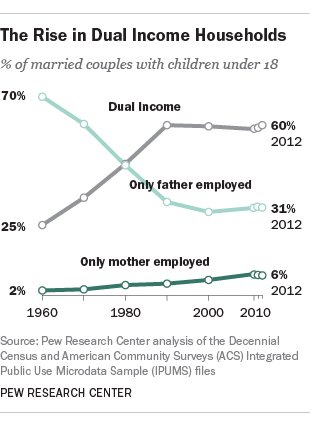Are you wondering what a life insurance beneficiary is? Well, a life insurance beneficiary is the person or entity designated to receive the policy’s death benefit when the insured person passes away. It’s an important role that ensures that your loved ones are taken care of financially in the event of your untimely demise. In this blog article, we’ll delve deeper into what a life insurance beneficiary entails, why it’s crucial to choose one, and how to select the right person for this responsibility. Let’s get started and demystify the concept of a life insurance beneficiary.
What is a Life Insurance Beneficiary?
Life insurance is a vital financial tool that provides protection and financial security to individuals and their loved ones. When it comes to life insurance, one of the key components to understand is the concept of a beneficiary. A life insurance beneficiary is an individual or entity designated to receive the policy’s death benefit upon the insured person’s passing. This individual or entity plays a crucial role in ensuring that the intended financial support is provided to the right people or organizations after the policyholder’s death.
Who Can Be a Beneficiary?
When choosing a life insurance beneficiary, there are various options to consider. The most common types of beneficiaries include:
- Individuals: This includes spouses, children, parents, siblings, or any person designated by the policyholder.
- Trusts: A trust can be named as the beneficiary, allowing the policyholder to provide for specific individuals or organizations following their demise.
- Charitable Organizations: Some individuals choose to make charitable organizations the beneficiaries of their life insurance policies, allowing them to contribute to causes they care about.
- Estates: The policyholder’s estate can be named as a beneficiary, which means the death benefit will be distributed according to the individual’s will or state laws.
It’s important to carefully consider and evaluate the pros and cons of each beneficiary option. Consulting with a financial advisor or estate planning professional can provide valuable insight to help determine the most suitable beneficiary choice based on individual circumstances and goals.
Primary and Contingent Beneficiaries
When designating beneficiaries for a life insurance policy, it’s common to have both primary and contingent beneficiaries. Let’s explore the difference between these two types:
Primary Beneficiary: The primary beneficiary is the first person or entity entitled to receive the death benefit. If the primary beneficiary is deceased at the time of the policyholder’s passing or rejects the proceeds, the contingent beneficiary becomes the recipient. Primary beneficiaries can be individuals, trusts, charitable organizations, or estates.
Contingent Beneficiary: The contingent beneficiary is named as the backup beneficiary in case the primary beneficiary is unable to receive the death benefit. It’s important to designate a contingent beneficiary to ensure the smooth distribution of the policy proceeds if the primary beneficiary is unable to fulfill this role.
Including both primary and contingent beneficiaries provides a safety net in case unforeseen circumstances arise. This approach ensures that the policyholder’s intentions are respected and the death benefit is received by the intended recipient.
Choosing the Right Beneficiary
Selecting a life insurance beneficiary is a personal decision that should align with the policyholder’s specific circumstances and goals. Here are some factors to consider when choosing the right beneficiary:
1. Relationship:
Consider the relationship and dependency of potential beneficiaries on the policyholder. It’s important to choose someone who would be directly impacted financially by the policyholder’s passing or has a substantial emotional connection.
2. Financial Situation:
Evaluate the financial situation and needs of potential beneficiaries. Ensure that the policy’s death benefit will provide adequate support to the designated beneficiaries, especially if they rely on the policyholder’s income or have financial obligations.
3. Age of Beneficiaries:
Consider the age of potential beneficiaries, especially if they are minors. Minors cannot receive the death benefit directly, and specific arrangements need to be made to protect their interests, such as establishing a trust or designating a guardian.
4. Special Considerations:
Take into account any special circumstances or considerations that may affect the choice of beneficiaries, such as individuals with special needs who may require ongoing financial support or blended families where dependents come from multiple relationships.
5. Updating Beneficiary Designations:
Life circumstances change over time, so it’s important to review and update beneficiary designations periodically. Major life events like marriage, divorce, births, or deaths within the family may necessitate changes to ensure the intended beneficiaries are still accurately reflected.
By carefully considering these factors and seeking professional advice when needed, individuals can make informed decisions when designating their life insurance beneficiaries.
Implications of Life Insurance Beneficiary Designations
Understanding the implications and details surrounding life insurance beneficiary designations is crucial for policyholders and their beneficiaries. Here are some important points to note:
1. Control Over Death Benefit:
The policyholder maintains control over the life insurance policy and can change the beneficiary designation at any time during their lifetime. However, after their passing, these designations become irrevocable, and the death benefit is paid out accordingly.
2. Avoiding Probate:
Life insurance proceeds are typically paid directly to the named beneficiaries, bypassing probate court. This means that the beneficiaries can receive the death benefit more quickly compared to other assets that may be subject to probate.
3. Tax Considerations:
In the United States, life insurance death benefits are generally income tax-free. However, depending on the size of the policy and the estate’s value, it’s essential to consider potential estate tax implications. Consulting with a tax professional can provide clarity on tax-related matters.
4. Multiple Beneficiaries:
Policyholders can name multiple beneficiaries and specify the percentage of the death benefit each should receive. This allows for flexibility in dividing the death benefit among dependents or organizations according to the policyholder’s wishes.
5. Contingent Ownership and Debt Settlement:
Life insurance policies can also include contingent ownership provisions, which allow beneficiaries to assume ownership of the policy upon the policyholder’s death. This can provide financial flexibility for beneficiaries, enabling them to use the policy to settle debts or address immediate financial needs.
Understanding these implications helps policyholders make well-informed decisions, ensuring that their life insurance policy serves its intended purpose of providing financial support to their chosen beneficiaries.
Reviewing and Updating Beneficiary Designations
Regularly reviewing and updating beneficiary designations is essential to ensure that the chosen individuals or entities are still the intended recipients of the life insurance policy’s death benefit. Here are some instances when reviewing and updating beneficiary designations is crucial:
1. Major Life Events:
Significant life events such as marriage, divorce, births, or deaths within the family may warrant changes to beneficiary designations. It’s important to review designations after such events to ensure they align with the policyholder’s current wishes.
2. Relationship Changes:
Changes in relationships, such as the breakdown of a marriage or the development of new partnerships, may require updates to beneficiary designations. Regularly reviewing these designations helps avoid potential complications or unintended consequences.
3. Estate Planning Updates:
Changes in estate planning, such as the establishment of trusts or changes in wills, may require corresponding updates to life insurance beneficiary designations. Keeping all aspects of financial planning aligned ensures consistency and avoids conflicts.
4. Financial Dependency Changes:
As the financial situation of potential beneficiaries evolves, it’s important to reassess whether the designated life insurance policy provides adequate support. Regular updates can help ensure that the intended recipients are protected financially.
5. Periodic Review:
Even in the absence of major life events, it’s advisable to review beneficiary designations periodically. This ensures that designations remain accurate and up to date, providing peace of mind for the policyholder and avoiding potential complications for beneficiaries.
Taking the time to review and update beneficiary designations helps maintain the integrity of the life insurance policy and ensures that the right individuals or entities are protected.
In conclusion, understanding the concept of a life insurance beneficiary is crucial when considering a life insurance policy. By designating the right beneficiaries, individuals can ensure that their loved ones or preferred organizations receive the intended financial support in the event of their passing. Choosing the right beneficiaries, understanding the implications, and regularly reviewing and updating designations are essential steps to unlocking the full potential of a life insurance policy.
Life Insurance: Beneficiaries
Frequently Asked Questions
Frequently Asked Questions (FAQs)
What is a life insurance beneficiary?
A life insurance beneficiary is the individual or entity designated to receive the death benefit from a life insurance policy upon the insured person’s death.
Who can be a life insurance beneficiary?
A life insurance beneficiary can be any person or organization chosen by the policyholder. It can be a spouse, child, family member, friend, trust, or even a charity.
Can a life insurance beneficiary be changed?
Yes, a life insurance beneficiary can be changed by the policyholder at any time, as long as they are of sound mind and have the legal capacity to make changes to the policy.
How many beneficiaries can be named in a life insurance policy?
There is no limitation on the number of beneficiaries that can be named in a life insurance policy. It is possible to have multiple primary beneficiaries and contingent beneficiaries as well.
What happens if a beneficiary predeceases the insured?
If a beneficiary predeceases the insured, the death benefit will typically be paid to the remaining living beneficiaries unless otherwise specified by the policyholder. It is important to update beneficiaries regularly.
Can a minor be named as a life insurance beneficiary?
Yes, a minor can be named as a life insurance beneficiary, but they may not have direct access to the funds until they reach the age of majority. In the meantime, a guardian or trustee may be appointed to manage the funds on their behalf.
Can an estate or trust be named as a life insurance beneficiary?
Yes, an estate or trust can be named as a life insurance beneficiary. However, it is important to consult with an attorney or financial advisor to ensure that the proper legal and tax implications are considered.
How does the life insurance policy determine the distribution of the death benefit?
The life insurance policy typically allows the policyholder to specify how the death benefit should be distributed among the beneficiaries. This can be done in equal percentages, specific dollar amounts, or according to a predetermined plan.
What happens if a life insurance beneficiary is not named?
If a specific beneficiary is not named, the death benefit will usually be paid to the insured’s estate. It will then be distributed according to the laws of inheritance or the instructions provided in the insured’s will.
Final Thoughts
A life insurance beneficiary is a person or entity designated to receive the policy benefits upon the insured person’s death. It is essential to choose a beneficiary who will financially benefit from the insurance payout and fulfill the intended purpose of the policy. Typically, beneficiaries are spouses, children, or other family members. However, they can also be charitable organizations or trusts. Choosing the right beneficiary ensures that your loved ones are taken care of financially when you’re no longer around. Therefore, understanding what is a life insurance beneficiary is crucial when planning for the future.



